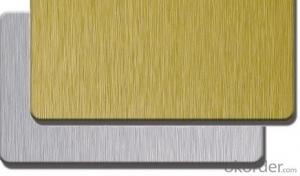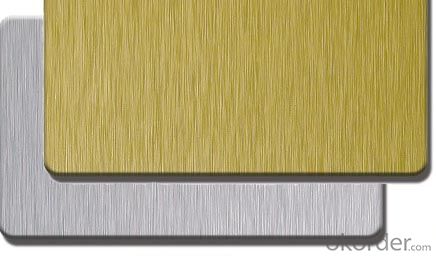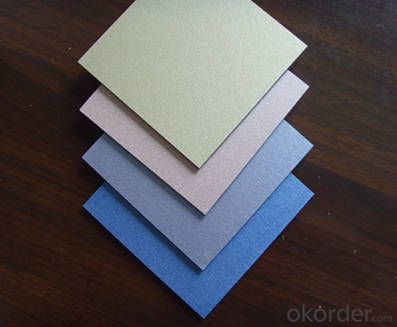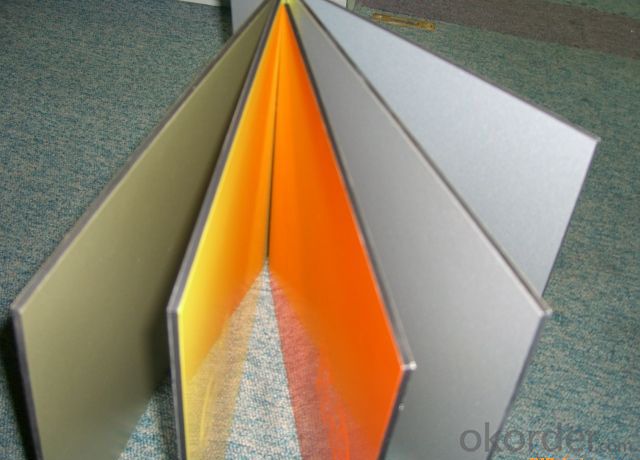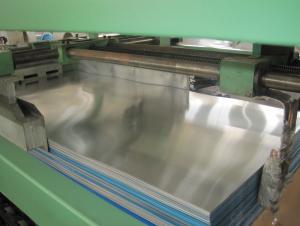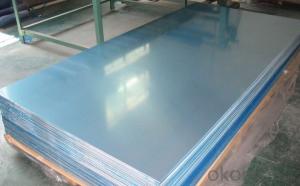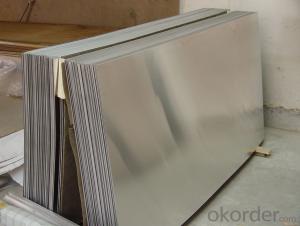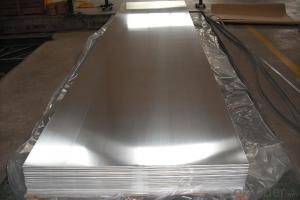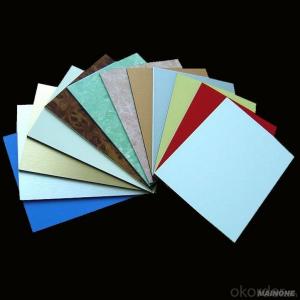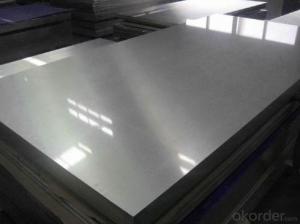Msc Aluminum Sheets - Aluminium Composite Panel for Insulation Application
- Loading Port:
- Shanghai
- Payment Terms:
- TT OR LC
- Min Order Qty:
- 8 m.t.
- Supply Capability:
- 1000 m.t./month
OKorder Service Pledge
OKorder Financial Service
You Might Also Like
Specification
Structure of Aluminium Compoosite Pannel for Insulation Application Description:
Coated aluminum coil/sheet are of a wide range of colors, which gives wonderful appearance no matter in residential and commercial constructions of great exhibition centers.
The coated aluminum coil/sheet have been widely used in the fields of construction and decoration( garage doors, ceiling etc.), electronic appliances, lighting decoration, air-condition air pipes, sandwich panels and drainages etc.
Main Features of the Aluminium Compoosite Pannel for Insulation Application:
1) High flexibility
2) Impact resistance
3) Excellent weather-proof durability
4) Anti-ultraviolet
5) High erosion resist
Images of the Aluminium Compoosite Pannel for Insulation Application:
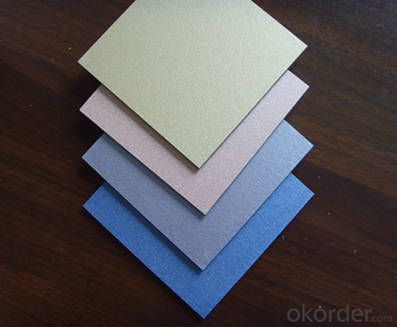

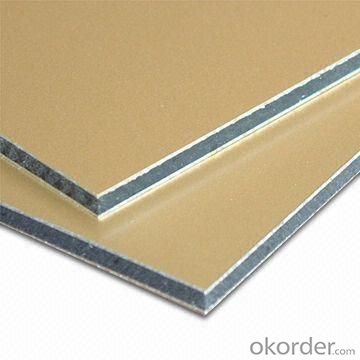
Aluminium Compoosite Pannel for Insulation Application Specification:
Alloy | A1100,A3003,A1050,A8011 etc |
Temper | H16,H18,H24 |
Thickness | From 0.024mm to 1.2mm |
Width | Standard width:1240mm |
Special width:1300mm,1520mm,1570mm,1595mm | |
Diameter | Standard dia:1200mm |
Interior dia:150mm,405mm,505mm | |
Weight | 2.5 T/coil,3.0 T/coil |
Coating | PE, PVDF, AC |
Surface | Embossed, mill finish, coated |
Color | AS to code RAL |
Gloss | 10-90%(EN ISO-2813:1994) |
Coating Thickness | PE: more than 18 micron |
PVDF: more than 25 micron | |
Coating Hardness (pencil resistance) | More than 2h |
Coating adhesion | 5J(EN ISO-2409:1994) |
Impact Resistance | No peeling or cracking(50 kg/cm,ASTMD-2794:1993) |
Flexibility (T-bend) | 2T |
MEK resistance | More than 100 |
FAQ:
a.What is monthly capacity
---CNBM is one stated own company and our monthly capacity is about 2000tons.
b. Now which countries do you export your goods?
---Now we export to South East Asia,Africa, North America,South America ect.
- Q: What are the different types of surface treatments available for anodized aluminum sheets?
- For anodized aluminum sheets, there exists a range of surface treatments that can enhance the appearance, durability, and functionality of the material. One option is the brushed finish, which involves using abrasive materials to create parallel lines on the sheet. This technique gives the aluminum a matte appearance and effectively conceals scratches and fingerprints. Another treatment is the mirror finish, achieved through polishing the sheet to create a high gloss, mirror-like reflection. This finish is commonly used for decorative purposes and provides a sleek and modern look. Etching is a process in which chemicals or abrasives are used to remove a thin layer of the anodized coating, creating a textured or patterned design on the sheet. This technique allows for customization and unique aesthetics. Powder coating is a popular treatment in which a dry powder is electrostatically applied to the anodized aluminum sheet and then cured under heat. This creates a durable and customizable coating in terms of color, texture, and finish. For a smooth, brushed appearance, satin finish involves sanding the aluminum sheet with fine grit sandpaper. This finish gives the surface a subdued and elegant look. Mechanical finishes encompass various techniques like polishing, buffing, or grinding to achieve different textures and finishes. The final result can range from smooth and glossy to rugged and textured, depending on the desired effect. Chemical treatments such as anodizing, chromating, or chemical brightening can enhance the corrosion resistance, color, and overall appearance of the aluminum sheet. They also improve the adhesion of paints or adhesives to the surface. It is important to consider that the availability of these surface treatments may vary depending on the manufacturer and specific requirements. Consulting with the supplier or manufacturer is recommended to determine the most suitable treatment for your application.
- Q: Is it suitable to use aluminum sheets in environments with high moisture levels?
- <p>Yes, aluminum sheets can be used in areas with high humidity. Aluminum is a corrosion-resistant metal that does not rust, making it suitable for humid environments. However, it's important to ensure that the aluminum is properly coated or anodized to protect it from potential damage due to moisture. This treatment can prevent any form of corrosion and extend the life of the aluminum sheets.</p>
- Q: This question asks about the expected duration or service life of aluminum siding or cladding used in construction.
- <p>The lifespan of aluminum siding or cladding typically ranges from 20 to 50 years, depending on the quality of the material, installation, and environmental conditions. High-quality aluminum siding, when properly maintained and installed, can last up to 50 years. It is resistant to rust and decay, making it a durable choice for exterior cladding. However, factors such as extreme weather conditions, poor installation, and lack of maintenance can reduce its lifespan.</p>
- Q: Is it possible to use aluminum sheets for creating roofing tiles?
- <p>Yes, you can use aluminum sheets to make roofing tiles. Aluminum is a popular material for roofing due to its durability, lightweight, and resistance to corrosion. It can be shaped into various styles and sizes to mimic traditional roofing materials like clay or slate. Aluminum roofing tiles are also known for their energy efficiency, as they reflect heat and can help reduce cooling costs. However, it's important to ensure that the aluminum sheets are of good quality and installed correctly to achieve the desired performance and longevity.</p>
- Q: A copper-aluminum alloy has an aluminum concentration of (5.19x10^2) kg/m3.If the densities of aluminum and copper are 2.71 and 8.94 g/cm3, respectively, what is the concentration of aluminum in wt%?Could someone please help wit this question, im lost
- Copper Aluminum Alloy
- Q: Can aluminum sheets be perforated for ventilation purposes?
- Yes, aluminum sheets can be perforated for ventilation purposes. Perforating aluminum sheets involves creating small holes or patterns through the sheet to allow airflow and ventilation. This technique is commonly used in various industries such as construction, automotive, and manufacturing. Perforated aluminum sheets offer several benefits for ventilation purposes, including enhanced air circulation, temperature regulation, and moisture control. The size, shape, and pattern of the perforations can be customized to suit specific ventilation requirements. Additionally, perforated aluminum sheets are lightweight, durable, and corrosion-resistant, making them ideal for applications that require both ventilation and structural integrity.
- Q: This question asks for methods to maintain and repair aluminum sheets once they have been installed.
- <p>To maintain and repair aluminum sheets after installation, follow these steps: Regularly clean the surface with a soft cloth and mild detergent to remove dirt and grime. Avoid abrasive materials that can scratch the surface. For minor scratches or dents, use aluminum filler or touch-up paint that matches the sheet's color. Apply the filler or paint carefully, following the manufacturer's instructions. For more severe damage, consider hiring a professional to assess and repair the damage to ensure structural integrity. Always check for any signs of corrosion and address them promptly to prevent further damage. Regular maintenance will prolong the life of aluminum sheets and keep them looking their best.</p>
- Q: What is the density of 101 aluminum sheets?
- The density of 101 aluminum sheets cannot be determined without knowing the dimensions and weight of each individual sheet.
- Q: Can 101 aluminum sheets be used in electrical or electronic components?
- Yes, 101 aluminum sheets can be used in electrical or electronic components. Aluminum is a versatile metal that possesses excellent electrical conductivity and is widely used in various electrical and electronic applications. It is commonly used as a conductor in power transmission lines, electrical cables, and wiring. Additionally, aluminum sheets can be used in the manufacturing of electronic components such as heat sinks, circuit boards, and enclosures due to their lightweight, corrosion-resistant, and thermally conductive properties. However, it is important to note that the specific grade and alloy of aluminum, as well as other factors such as thickness and surface treatment, may also influence its suitability for certain electrical or electronic applications.
- Q: This question asks for a comparison of the positive and negative aspects of utilizing aluminum sheets in building construction.
- <p>Aluminum sheets in construction offer several advantages, including lightweight properties that reduce structural load, excellent corrosion resistance, and durability which minimizes maintenance needs. They are also energy-efficient, reflecting heat and reducing cooling costs. Additionally, aluminum is recyclable, contributing to sustainability. Disadvantages include higher initial costs compared to some traditional materials and potential for dents or damage from impacts. Aluminum can also be noisy when walked on, and it may require additional insulation for thermal performance, adding to the overall cost.</p>
Send your message to us
Msc Aluminum Sheets - Aluminium Composite Panel for Insulation Application
- Loading Port:
- Shanghai
- Payment Terms:
- TT OR LC
- Min Order Qty:
- 8 m.t.
- Supply Capability:
- 1000 m.t./month
OKorder Service Pledge
OKorder Financial Service
Similar products
Hot products
Hot Searches
Related keywords
